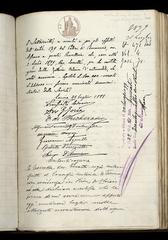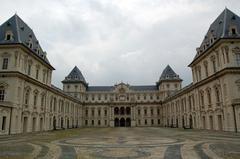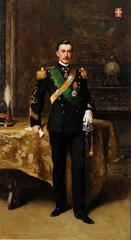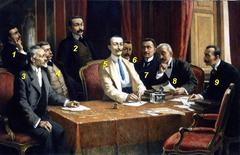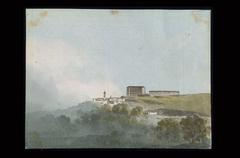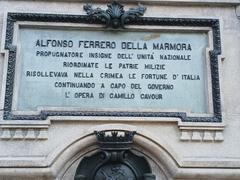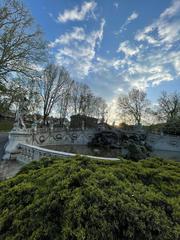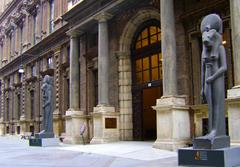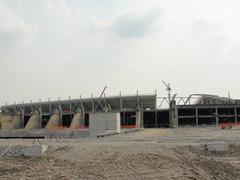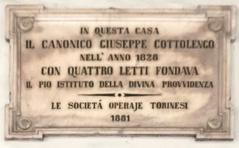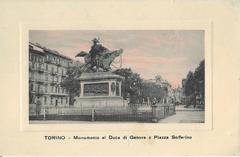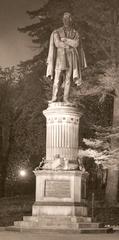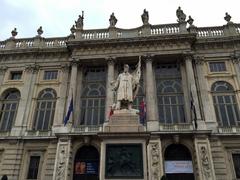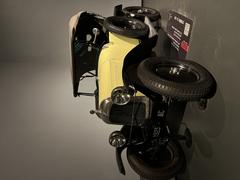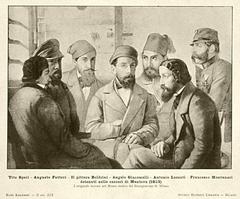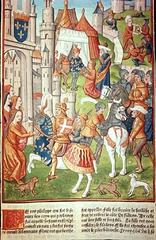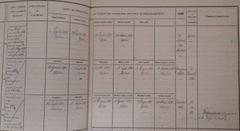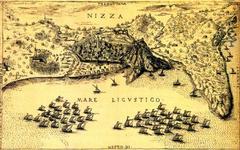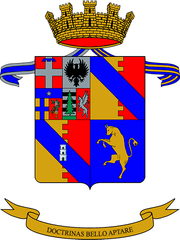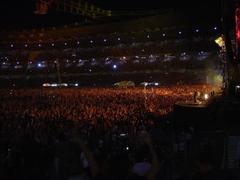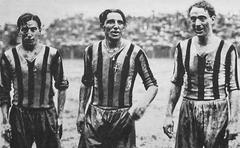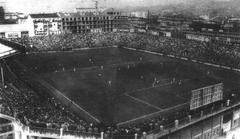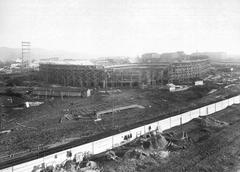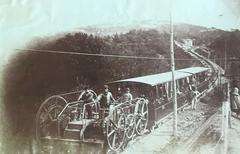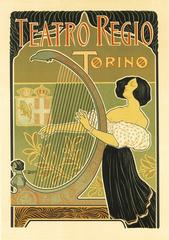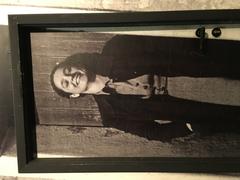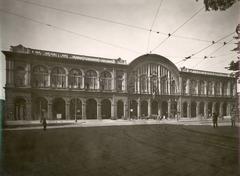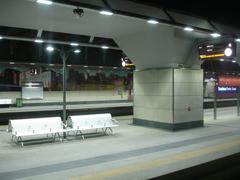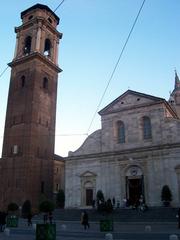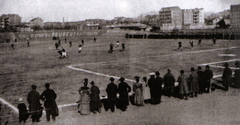Monumental Cemetery of Turin: Visiting Hours, Tickets, and In-Depth Visitor Guide
Date: 15/06/2025
Introduction
The Monumental Cemetery of Turin (Cimitero Monumentale di Torino) is one of Italy’s most important historical and artistic sites. Established in 1828 and designed by Carlo Bernardo Mosca, this “city of silence” acts as an open-air museum, blending neoclassical architecture with later styles like Art Nouveau, Symbolism, and modernism. The cemetery is not only a resting place for many notable figures who shaped Turin and Italian history, but also a showcase of masterful funerary art and architecture. With free entry, accessible paths, guided tours, and thematic routes, it offers an immersive and respectful cultural experience for all visitors.
Table of Contents
- Introduction
- History and Development
- Artistic and Architectural Heritage
- Notable Burials and Stories
- Cultural Role and Social Significance
- Thematic Routes and Guided Tours
- Preservation and Modern Engagement
- Essential Visitor Information
- Nearby Attractions and Travel Tips
- FAQs
- Conclusion and Call to Action
- References
History and Development
Founded during a period of urban renewal, the Monumental Cemetery of Turin was conceived as a reflection of the city’s neoclassical tastes and civic aspirations. Its initial design featured symmetrical, tree-lined avenues and formal gardens, creating a serene environment for reflection. Over time, as Turin evolved, the cemetery expanded and incorporated architectural and artistic styles that mirrored the city’s changing social and aesthetic landscape. Distinct areas reflect both Catholic and non-Catholic traditions, underscoring Turin’s multicultural identity (ar-tour.com).
Artistic and Architectural Heritage
Layout and Garden Influence
The cemetery’s layout draws inspiration from European formal gardens, with geometric avenues and elegant landscaping. Its core section, “Il Primitivo,” and several subsequent expansions visually document Turin’s development through the 19th and 20th centuries.
Artistic Styles and Notable Works
- Neoclassicism: Early monuments feature marble columns, pediments, and allegorical sculptures, embodying ideals of civic virtue and dignity.
- Symbolism & Art Nouveau: Later periods introduced expressive, flowing forms, floral motifs, and new materials like bronze and colored glass, reflecting changing attitudes toward life, death, and memory.
- Modernism: Select areas feature restrained, geometric markers and contemporary sculpture.
Prominent artists who contributed to the cemetery’s visual legacy include Leonardo Bistolfi, Pietro Canonica, Edoardo Rubino, and Gaetano Cellini. Highlights include the poignant Laura Vigo tomb by Canonica and the dramatic Moriondo monument near the main entrance (Significant Cemeteries).
Notable Burials and Stories
The cemetery is the final resting place for a remarkable array of individuals who shaped Turin’s history:
- Cesare Lombroso: Pioneer in criminology.
- Giovanni Agnelli: Founder of Fiat and a key figure in industrial Turin.
- Ernesto Schiaparelli: Renowned Egyptologist.
- Silvio Pellico: Writer and patriot.
- Edmondo De Amicis: Author of the beloved novel Cuore.
- Annie Vivanti: Internationally known writer and poet.
- Francesco Tamagno: Legendary tenor.
- Isa Bluette: Early cinema and stage star.
- Erminio Macario: Influential comic actor.
Unique stories, such as the achievements of the Bollito sisters—world champions in shorthand—and the industrial legacy of Virginia Bordino’s family, add depth to the site’s narrative (meer.com).
Cultural Role and Social Significance
The Monumental Cemetery plays an active role in Turin’s cultural life. It hosts commemorative events, educational programs, and guided tours that foster a deeper connection to the city’s past. On All Saints’ Day (Ognissanti), families gather to honor their ancestors, blending solemnity with tradition (Katherine Dolan Writes). As part of the European Cemeteries Route, it stands alongside other prestigious cemeteries in promoting shared European heritage (cemeteriesroute.eu).
Thematic Routes and Guided Tours
To help visitors make the most of their experience, the cemetery offers several thematic itineraries:
- Avenue of the Cypresses: Showcases the most significant family mausoleums.
- Art Nouveau Trail: Highlights early 20th-century funerary art.
- Women of Turin: Focuses on notable women buried in the cemetery.
- Curiosities and Lesser-Known Stories: Explores unique and overlooked graves.
Guided tours—available in multiple languages and organized by local groups or through the ARtour platform—provide expert insight into the art, architecture, and history of the site.
Preservation and Modern Engagement
The city of Turin, together with cultural organizations, actively preserves the cemetery’s monuments through restoration projects and digital documentation. Virtual tours, interactive maps (available via the ARtour app), and photographic archives make the site increasingly accessible to global audiences (Significant Cemeteries).
Essential Visitor Information
- Location: Corso Novara 131/A, Turin. Easily accessible by public transport (bus lines 11, 12, 15) and by car.
- Visiting Hours:
- Spring/Summer: 8:00 AM – 6:00 PM
- Autumn/Winter: 8:00 AM – 4:30 or 5:00 PM
- Hours may vary on holidays; check the official website or Significant Cemeteries for updates.
- Admission: Free. Guided tours and special events may require a ticket (€5–€10).
- Guided Tours: Offered primarily on weekends; advance booking is recommended.
- Accessibility: Main avenues are wheelchair accessible; electric minibus service available.
- Facilities: Restrooms and water fountains are near the main entrance; no cafés or shops inside.
- Visitor Etiquette: Maintain respect (quiet conversation, no touching monuments); photography allowed but discretion is advised, especially during ceremonies.
Nearby Attractions and Travel Tips
The cemetery’s location makes it convenient to visit other Turin landmarks such as:
- Egyptian Museum
- Mole Antonelliana
- Piazza Castello
- Royal Palace of Turin
Plan your itinerary using public transport and consider combining your cemetery visit with these historical sites for a deeper understanding of Turin’s cultural landscape.
Frequently Asked Questions (FAQ)
Q: What are the Monumental Cemetery of Turin visiting hours?
A: Open daily, usually 8:00 AM – 6:00 PM in spring/summer, and 8:00 AM – 4:30/5:00 PM in autumn/winter. Confirm hours on the official website before visiting.
Q: Is there an entry fee?
A: No. Entry is free; guided tours may charge a nominal fee.
Q: Are guided tours available in English?
A: Yes, several providers offer tours in English and Italian (ARtour).
Q: Is the cemetery accessible for people with mobility challenges?
A: Most main paths are accessible; older areas can be uneven, but electric minibus service is available.
Q: Can I take photographs?
A: Yes, for non-commercial purposes. Please be respectful, especially during funerals.
Conclusion and Call to Action
A visit to the Monumental Cemetery of Turin is a journey through the city’s rich history, culture, and art. Whether you’re an art lover, historian, or traveler, the cemetery provides an unparalleled experience among Turin historical sites. Plan ahead by checking current visiting hours and tour options, download the ARtour or Audiala app for interactive maps and guided tours, and include the cemetery in your broader exploration of Turin’s heritage. For more inspiration and practical tips, follow us on social media and consult the digital resources listed below.
References and Further Reading
- ARTour: Cemetery of Turin Guide
- European Cemeteries Route – Monumental Cemetery of Turin
- The Monumental Cemetery of Turin – Meer.com
- Significant Cemeteries: Monumental Cemetery of Turin
- Time Travel at Monumental Cemetery of Turin
- Katherine Dolan Writes: Tutti i Santi and Turin’s Monumental Cemetery
- Guide On Your Side: Turin Monumental Cemetery


